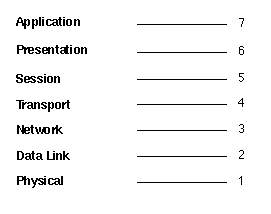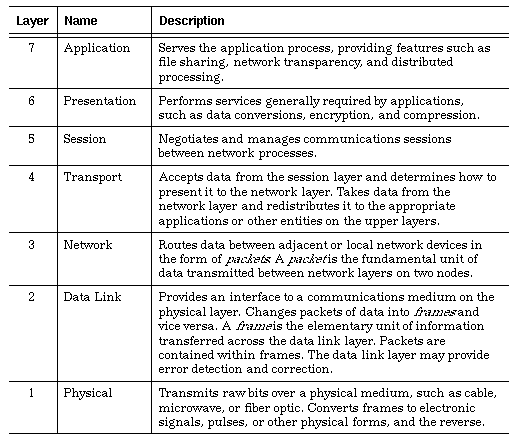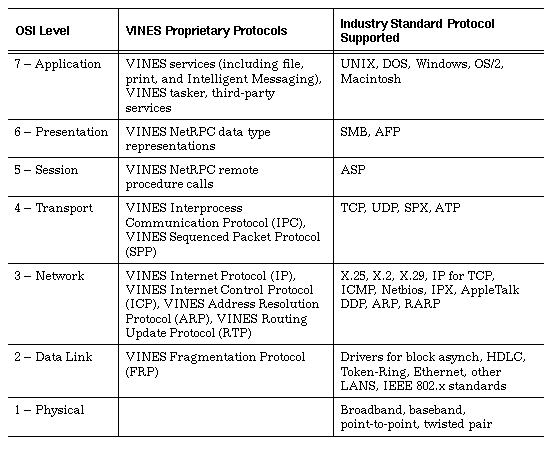Chapter 2 - OSI Communications Protocol Architecture
This chapter provides an overview of the communications protocol architecture designed by the International Standards Organization (ISO) for Open Systems Interconnection (OSI). This structure, called the OSI model, is a layered framework for distributed processing and networking in a multivendor environment.
Within any network, the ISO Reference Model defines three operational environments, as shown in Figure 2-1. Each of these environments builds upon and uses the services provided by the environment below it to accomplish specific tasks. These environments provide either:

Network-dependent functions that use data communication protocols to control how data is transferred between a source and destination 
Application-oriented functions that use protocols to determine how two end-user applications interact
The operational environments follow:

The Network Environment uses data communication protocols to manage the movement of data from one network node to the next. 
The OSI Environment includes the network environment and uses application-oriented protocols to ensure that once the data moves between two network nodes, it can be understood and processed by an application process. An application process is the entity that performs the information processing for a particular application. 
The Systems Environment includes the network and OSI environments, and uses the manufacturer's proprietary software and services to fulfill distributed processing requirements. This environment redirects data from internal processes to the network interface.

The OSI model groups functionally similar protocols within the OSI environment into seven layers, as shown in Figure 2-2. Each layer provides a well-defined set of services to the layer above it.
The layered approach limits the effect of the differences between protocols and makes communications more manageable. Higher layers do not need to know how a lower layer provides a service. Therefore, a protocol can be modified or even replaced without adverse effect, as long as it consistently meets the requirements of the adjoining layers.

The functions of these layers are briefly described in Table 2-1.

Each layer in the model provides services to the layer above it. In this way, any layer N is the service provider. The layer above it, N+1, is the service user. Layer N+1 accesses the services provided by layer N at Service Access Points (SAPs). Each SAP is identified by a unique address.
Protocol entities or the functional element in each layer use these services to exchange control information and data in units known as Protocol Data Units (PDUs), as shown in Figure 2-3.

The three lowest layers - physical, link, and network - are network-dependent. These layers use data communication protocols to control communication between two network nodes. They support communication from one network node to another that is physically or logically adjacent to it.
Communication between network-dependent nodes may not involve a network application. The network-dependent protocols are invoked if one or more nodes form a path between two end nodes.
Example Routing Nodes
A server may connect two dissimilar LANs, each containing a workstation engaged in interactive dialogue. As shown in Figure 2-4, the workstations are the end nodes and the server is a local, routing node that merely passes along information on its lowest three protocol layers.

The three upper layers - application, presentation, and session - are application-oriented and use protocols that let end user applications interact. These interactions use the services offered by each node's local operating system. Transactions between these layers occur on a peer basis; there is no recognition of how transmission between the two physically independent network nodes occurs.
The transport layer uses the services provided by the network-dependent lower layers to provide the application-oriented layers with a messaging service that is independent of the network. The transport layer masks the application-oriented layers from the operation of the network-dependent layers.
How Information Travels Through the OSI Model
The OSI model divides the labor of transporting data among the seven layers. A set of rules and conventions, known as protocols, specify how each layer communicates to a parallel layer that resides on a different network node. Each layer accomplishes its distinct task using one of the protocols available to it.
Layers behave as if they communicate only with the corresponding layer on a different computer. In reality, peer layers communicate by passing data through the layers below, and then out across the physical media. The boundary between adjacent layers is called an interface. It is the interface that determines the set of services provided to the next higher layer.
Data is transmitted through the protocol layers in the following manner:
1. A user initiates an action in the application process.
2. User data from the application layer passes down through the layers below. Each layer adds its own control information.
3. The network-dependent layers may need to break the data up into acceptably sized sections or fragments.
4. The protocols add headers or trailers to each fragment containing control information to help the peer layer on the destination node reassemble the message correctly. A data fragment, including its headers and trailers, is referred to as a packet.
5. Each layer adds a header and/or a trailer until the packet reaches the physical layer.
6. The data is transmitted on a physical medium such as baseband cable.
7. The data arrives at the physical layer of the destination node and begins a logical path upward. Headers and trailers are stripped off at the corresponding layer at which the source node added them until only the original user data exists.
8. The data fragments are re-assembled and the data is presented to the destination application process.
Figure 2-5 illustrates the flow of data through the protocol layers.

How VINES Compares to the OSI Model
The flow of data through the VINES system is the same as in the OSI model. VINES supports multivendor internetworking by keeping the higher, application-related layers independent of the lower routing and transport layers. VINES supports both industry standard protocols and its own protocols for communication within the VINES network and through gateways to other networks.
Within VINES, system components such as servers and workstations are single, addressable entities called nodes. Third-party routers that support VINES are also considered network nodes. Networks consist of one server and its adjacent nodes directly connected by a LAN topology. Networks can be interconnected by various media to form internetworks, or internets.
Each VINES node has a unique internet address on the network layer to distinguish it from all other nodes. Each server generates its own address from its serial number and assigns addresses to workstations as they enter the network.
Macintosh workstations are assigned unique AppleTalk internet addresses. See Inside AppleTalk by Apple Computer for more information.
Any server can perform two functions:

Function as an end node, originating and processing information on the application layer. 
Function as a local node that routes information to other servers, workstations, or nodes outside the VINES network.
The fundamental unit of information that passes through the system is the VINES packet, a datagram that passes through any node. VINES supports message types defined by its own and other industry standard protocols. Most messages consist of one or more VINES packets, originating at a source end node. Messages are exchanged by applications and by lower-layer entities as part of communication management.
VINES packets are formatted according to strict rules, so that all communicating entities agree on the context and meaning of the data they exchange. Each packet contains addressing information that lets the VINES network layer route the packet between its source and destination end nodes, using local nodes for intermediate routing.
Banyan supports a variety of VINES proprietary protocols and industry standard protocols to achieve seamless communication across LANs and WANs, as shown in Table 2-2.
